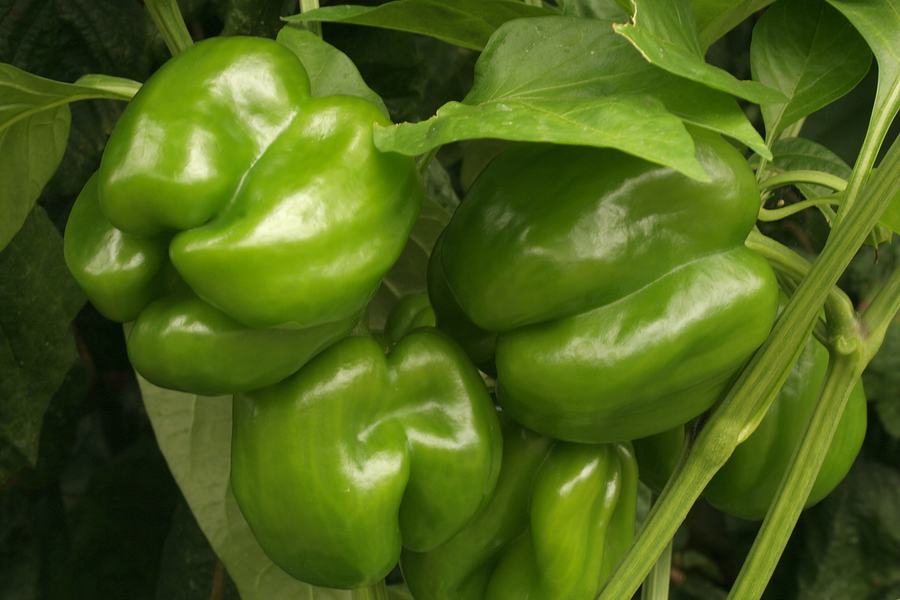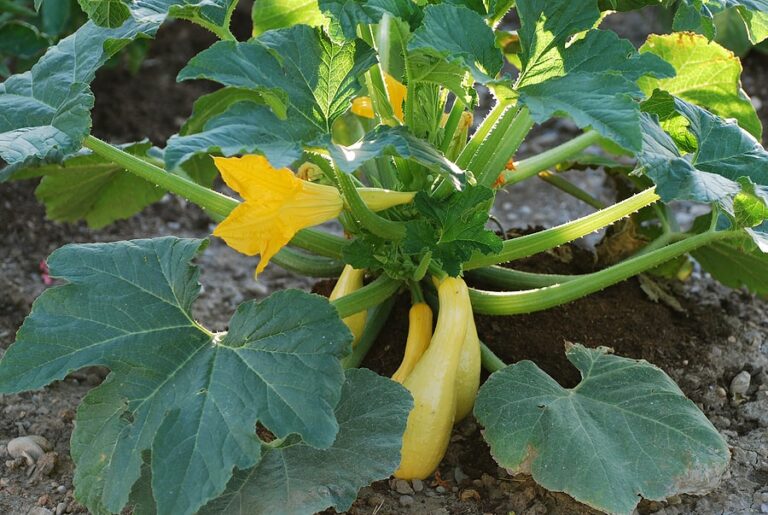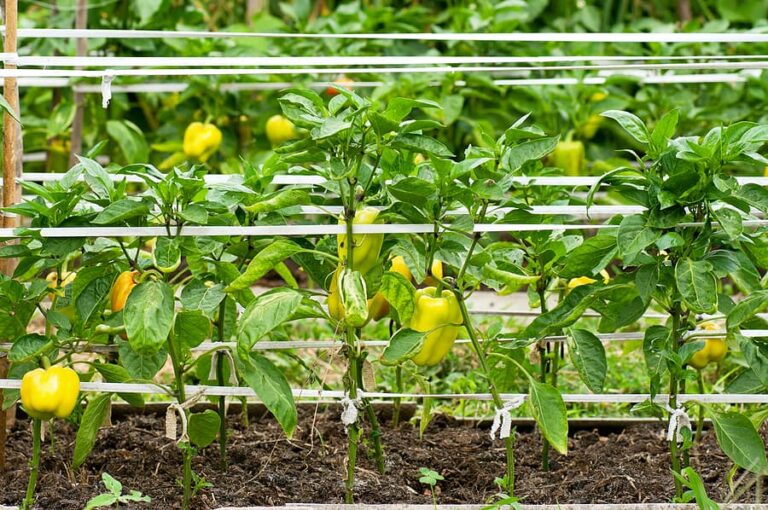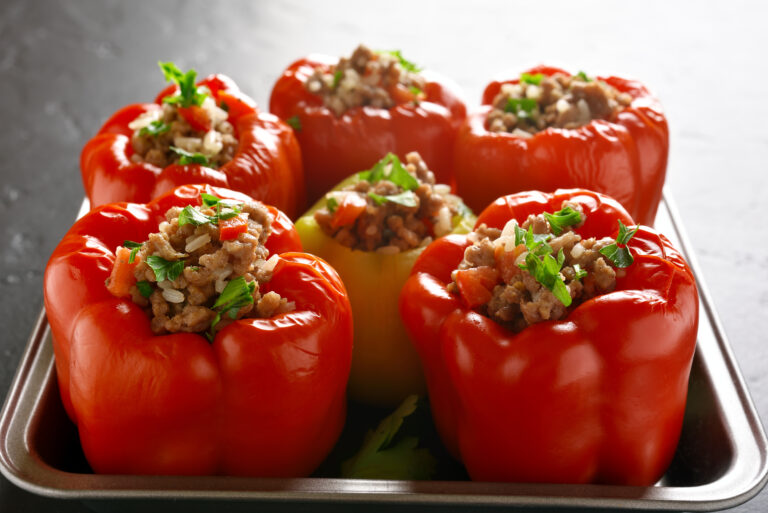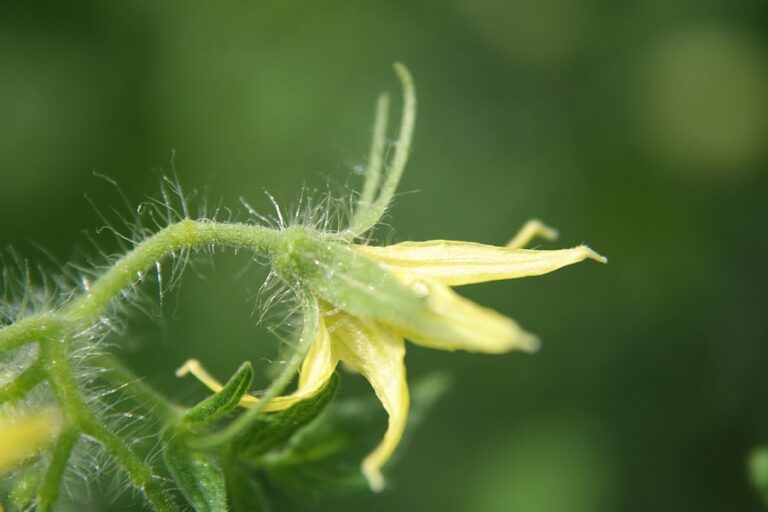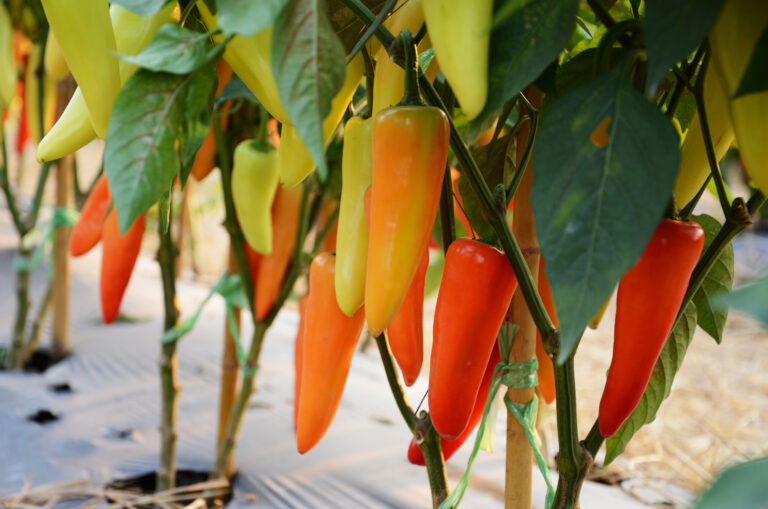How to Ripen Green Peppers Indoors After Harvest
If frost is coming or your pepper plants are slowing down, you can still ripen green peppers indoors. As a lifelong gardener, I’ve faced many end-of-season harvests where peppers were firm and green but not yet fully colored. With a little patience and the right conditions, those green peppers will turn red, yellow, or orange—just as flavorful as vine-ripened ones.
Why Peppers Stay Green on the Plant
Peppers ripen slowly when nights turn cool or when plants are stressed by drought or overproduction. Most bell and sweet pepper varieties will eventually turn color—red, orange, or yellow—if given enough warmth and time. When the growing season ends, you can bring that process indoors.
How to Ripen Peppers Indoors
1. Choose Mature Green Peppers
Pick peppers that have reached full size, glossy skin, and firm texture. Immature peppers rarely ripen off the plant.
2. Wipe and Dry
Gently clean off any soil or moisture. Dry peppers reduce the risk of mold during ripening.
3. Use the Paper Bag or Box Method
Place peppers in a paper bag or shallow cardboard box. Add a ripe banana or apple—the ethylene gas they release speeds ripening.
4. Keep Them Warm
Store peppers in a warm (65–75°F), well-ventilated area out of direct sunlight. A kitchen counter or pantry shelf works well.
5. Check Daily
Inspect peppers every day, removing any that soften or show spots. Within 7–14 days, most peppers will turn their mature color.
Expert Tip: Use a Ripening Tray
If you grow a lot of peppers, spread them out in a single layer on a tray lined with newspaper. Keep them in a warm, dry room. This method helps you monitor progress easily and avoids bruising.
How to Use Peppers That Won’t Ripen
Some green peppers may never change color, especially if picked too early. These are still perfectly edible—use them fresh in stir-fries, salads, or sauces. Their mild, grassy flavor is distinctive and delicious.
My Experience
After more than 30 years of growing peppers, I’ve learned that indoor ripening works best when peppers are harvested just before frost—firm, mature, and full-sized. I often spread mine on trays in a sunny kitchen window, where they slowly blush from green to red over two weeks. The reward is that sweet, homegrown flavor even after the garden season ends.
Final Thoughts
Don’t let the first chill of autumn end your pepper harvest. With warmth, patience, and a little ethylene gas from a ripe fruit, your green peppers can finish ripening indoors—bringing color and flavor to your fall kitchen.
Pepper Ripening Methods Comparison Chart
| Method | How It Works | Best For | Ideal Conditions | Time to Ripen | Pros | Cons |
|---|---|---|---|---|---|---|
| Paper Bag Method | Peppers are sealed with a ripe fruit that releases ethylene gas. | Small batches of peppers. | Warm room (65–75°F); dark place. | 5–10 days | Simple, space-saving, speeds ripening. | Must check daily to prevent mold. |
| Cardboard Box Method | Peppers layered with newspaper and a ripe banana or apple. | Large harvests. | Warm, dry area with airflow. | 7–14 days | Handles many peppers at once. | Slightly slower than bag method. |
| Ripening Tray (Open-Air) | Peppers spread out in a single layer for air circulation. | Medium to large batches. | Bright, warm indoor location. | 10–15 days | Easy to monitor, reduces mold. | Ripening may be uneven. |
| Sunny Window Method | Peppers ripen gradually in indirect sunlight. | A few decorative peppers or small harvest. | Warm window with filtered light. | 10–20 days | Natural color development; adds warmth. | Can cause soft spots if overheated. |
| Hanging Whole Plant | Entire uprooted plant hung upside down indoors. | End-of-season salvage. | Dry, warm, airy space (garage or porch). | 10–21 days | Peppers ripen naturally on stems. | Requires space; messy if roots shed soil. |
🌶 Peppers Growing Hub
Start here:
- How to Plant and Grow Hot Peppers: A Gardener’s Guide to Spicy Success
- How to Grow Sweet Peppers: A Gardener’s Guide to a Bountiful Harvest
Getting Peppers Started (general prep)
- Seed Starting Peppers: Proven Method for Strong, Healthy Plants
- Soil Preparation for Peppers: The Secret to Strong Roots and Big Harvests
- Best Hot Pepper Varieties to Grow for Salsas, Sauces, and Drying
- Best Sweet Pepper Varieties to Grow
- World’s Hottest Peppers You Can Grow in Your Garden
- The Science of Pepper Heat: Understanding Scoville Units
- Growing Peppers Indoors Under Lights
- Companion Planting with Peppers: Best and Worst Neighbors in the Garden
Planting & Growing Peppers
- When and How to Transplant Pepper Seedlings Outdoors
- 10 Steps to Grow a Bumper Pepper Crops
- How to Grow Hot Peppers in Containers: Tips for Small Spaces
- 7 Tips for Growing Peppers in Pots
- How to Grow Colored Bell Peppers: How to Get Reds, Yellows, and Oranges
- Cross-Breeding Hot Peppers at Home: A Beginner’s Guide
- How to Water & Fertilize Sweet Bell Peppers for Maximum Yield
- Pruning Pepper Plants for Healthier Growth and Bigger Harvests
- Six Tips to Grow Peppers for Flavor
- Pepper Season Extension & Overwintering: How to Keep Plants Producing Longer
Pepper Care & Troubleshooting
- Pepper Pests, Diseases, and Problems—How to Fix Them Naturally
- Caring for Peppers: Mid-Season Problem Cures
- How to Increase the Heat of Hot Peppers Naturally
- Overwintering Pepper Plants Indoors
- How to Overwinter Pepper Plants in Any USDA Zone
Harvesting & Preserving Peppers
- When to Harvest Hot Peppers for Maximum Heat
- How to Harvest Sweet Peppers for the Best Flavor
- How to Preserve Hot Peppers: Drying, Fermenting & Pickling
- How to Ripen Green Peppers Indoors
- Saving Pepper Seeds for Next Year’s Crop
Cooking & Using Peppers
- Preparing and Serving Sweet Peppers – Harvest to Table
- Five Ways to Cook and Serve Chili Peppers
- Stuffed Peppers: Best Varieties for Cooking
- Cooking with Hot Peppers: Flavor & Safety Tips
- How to Handle Hot Peppers Without Burning Your Skin

